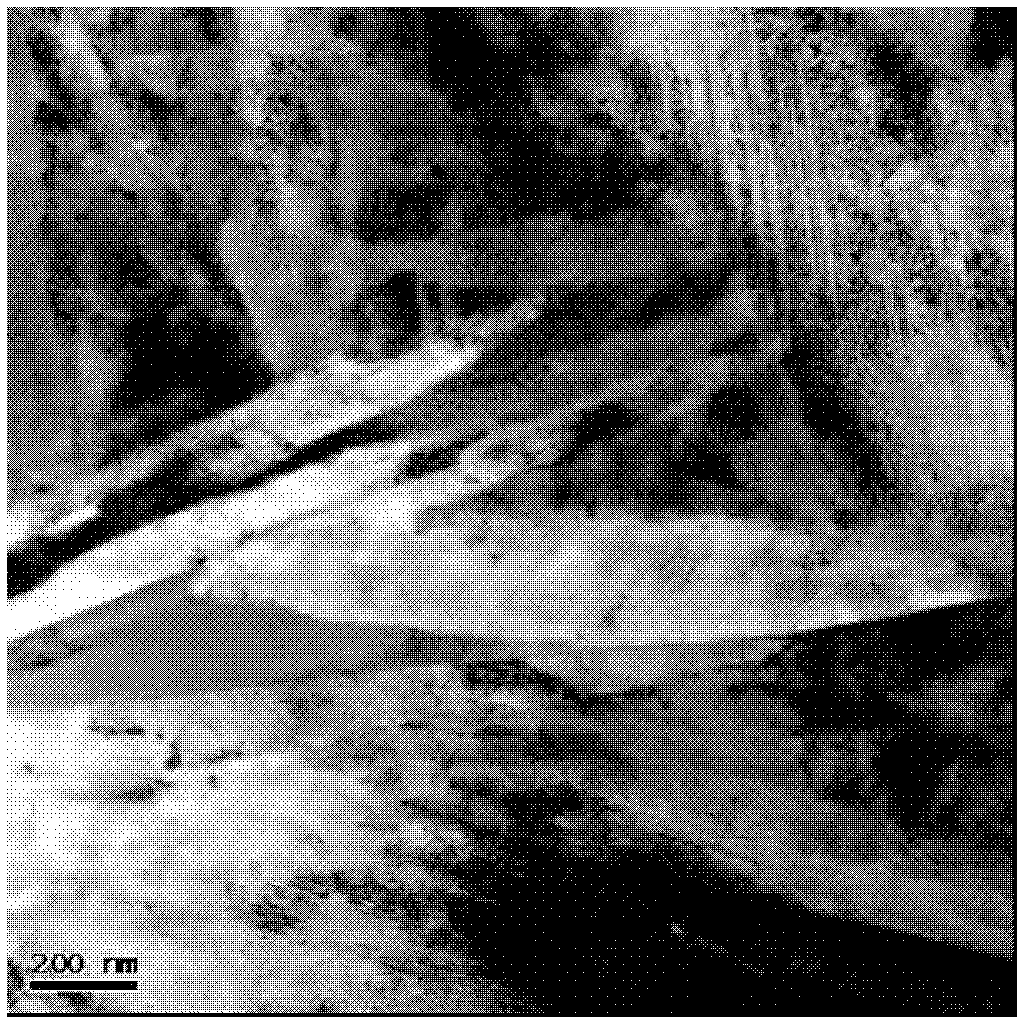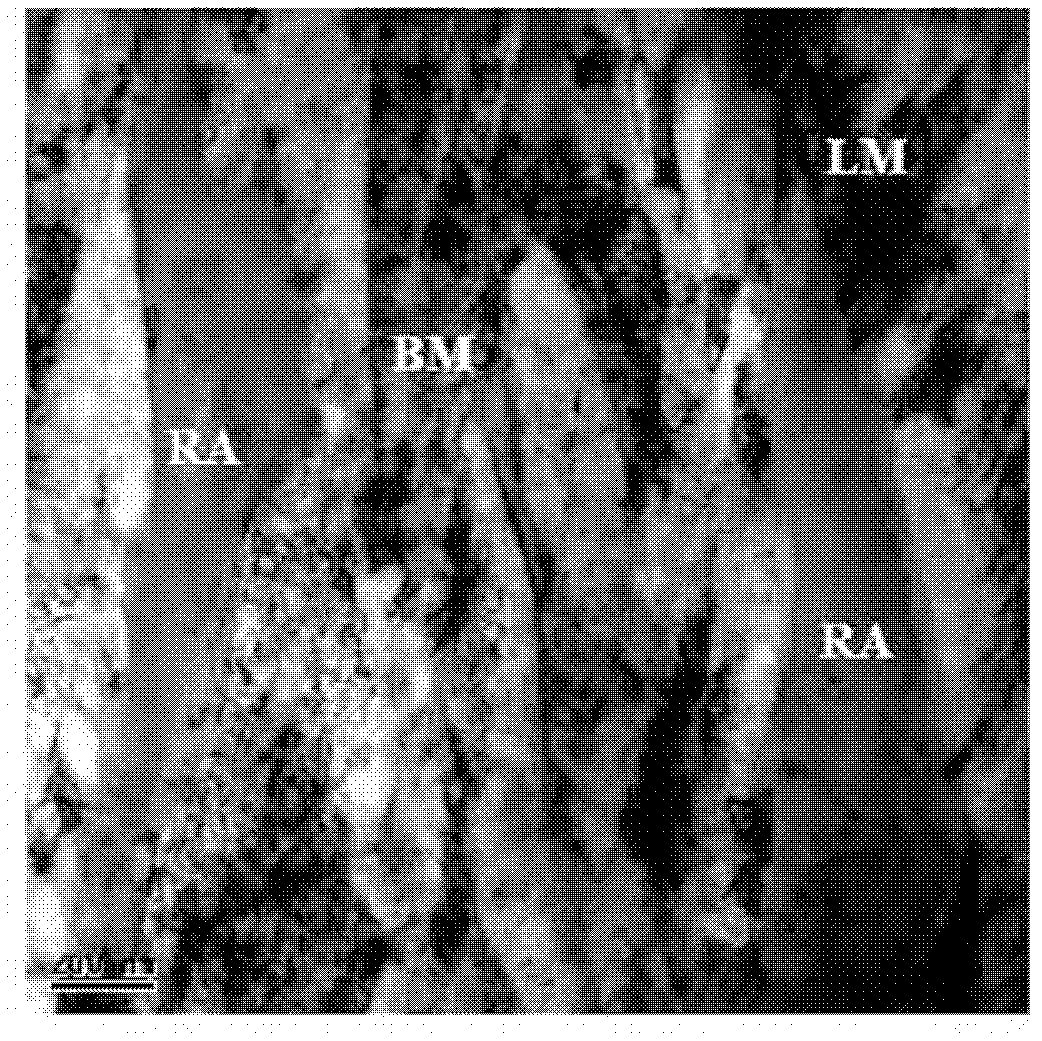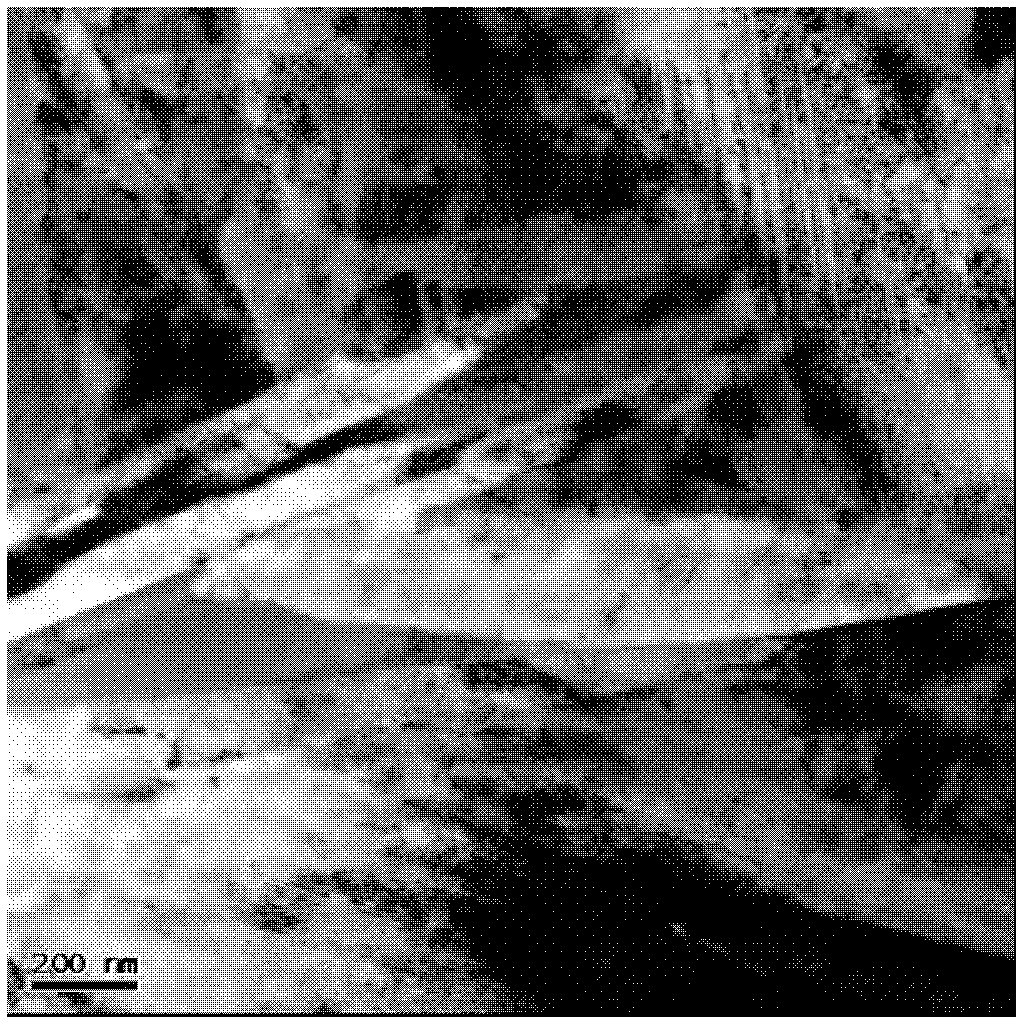Quenching-partitioning thermal treatment method for high strength and toughness of medium carbon silicon-manganese low alloy steel
A heat treatment method and low-alloy steel technology, applied in heat treatment equipment, heat treatment process control, manufacturing tools, etc., can solve the problems of poor stress corrosion resistance, poor plastic toughness, etc., to improve stress corrosion resistance, reduce hydrogen embrittlement susceptibility, Effect of improving hydrogen embrittlement and stress corrosion susceptibility
- Summary
- Abstract
- Description
- Claims
- Application Information
AI Technical Summary
Problems solved by technology
Method used
Image
Examples
specific Embodiment approach 1
[0012] Specific embodiment one: the high-strength toughness quenching-partition heat treatment method of the carbon silicon manganese low alloy steel in the present embodiment is realized through the following steps: one, the medium carbon silicon manganese low alloy steel is austenitized, and then in the medium carbon Austempering is carried out in the martensitic transition temperature range of silicon-manganese low-alloy steel, and the holding time is 60-120s; 2. The medium-carbon silicon-manganese low-alloy steel treated in step one is placed at the upper martensitic point M s Isothermal partition heat treatment at a partition temperature of 500° C. for 30 to 1800 seconds, and then quenched to room temperature to complete the high-strength and toughness quenching-partition heat treatment method for medium-carbon silicon-manganese low-alloy steel.
[0013] The martensitic transformation temperature range (M s ~ M f ) for a specific medium-carbon silicon-manganese low-alloy...
specific Embodiment approach 2
[0015] Specific embodiment two: the difference between this embodiment and specific embodiment one is: the austenitization temperature in the austenitizing treatment of the medium-carbon silico-manganese low-alloy steel in step 1 is A of the medium-carbon silico-manganese low-alloy steel C3 Above 30℃~50℃, the holding time is 600s~900s, of which A C3 The temperature at which all ferrite transforms into austenite when heated. Others are the same as in the first embodiment.
specific Embodiment approach 3
[0016] Embodiment 3: This embodiment differs from Embodiment 1 or Embodiment 2 in that: the carbon content in the medium-carbon silicomanganese low-alloy steel described in step 1 is in the range of 0.25% to 0.60%. Others are the same as in the first or second embodiment.
PUM
| Property | Measurement | Unit |
|---|---|---|
| tensile strength | aaaaa | aaaaa |
| yield strength | aaaaa | aaaaa |
| tensile strength | aaaaa | aaaaa |
Abstract
Description
Claims
Application Information
 Login to View More
Login to View More - R&D
- Intellectual Property
- Life Sciences
- Materials
- Tech Scout
- Unparalleled Data Quality
- Higher Quality Content
- 60% Fewer Hallucinations
Browse by: Latest US Patents, China's latest patents, Technical Efficacy Thesaurus, Application Domain, Technology Topic, Popular Technical Reports.
© 2025 PatSnap. All rights reserved.Legal|Privacy policy|Modern Slavery Act Transparency Statement|Sitemap|About US| Contact US: help@patsnap.com



